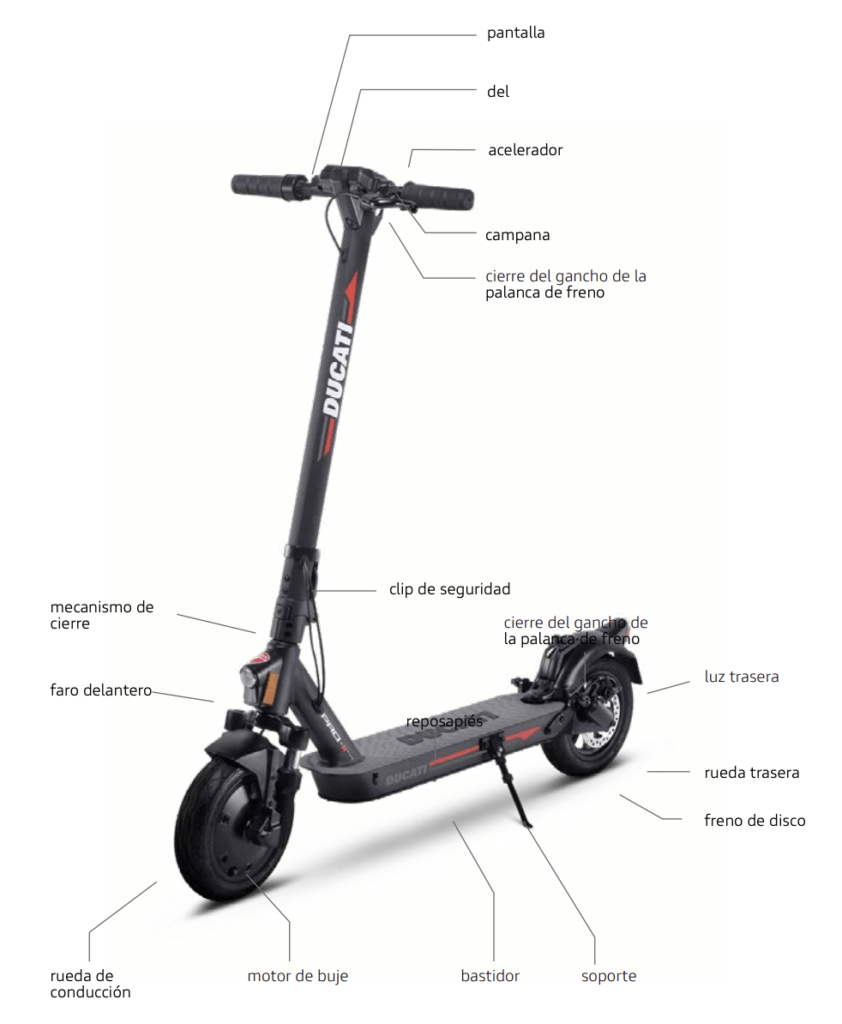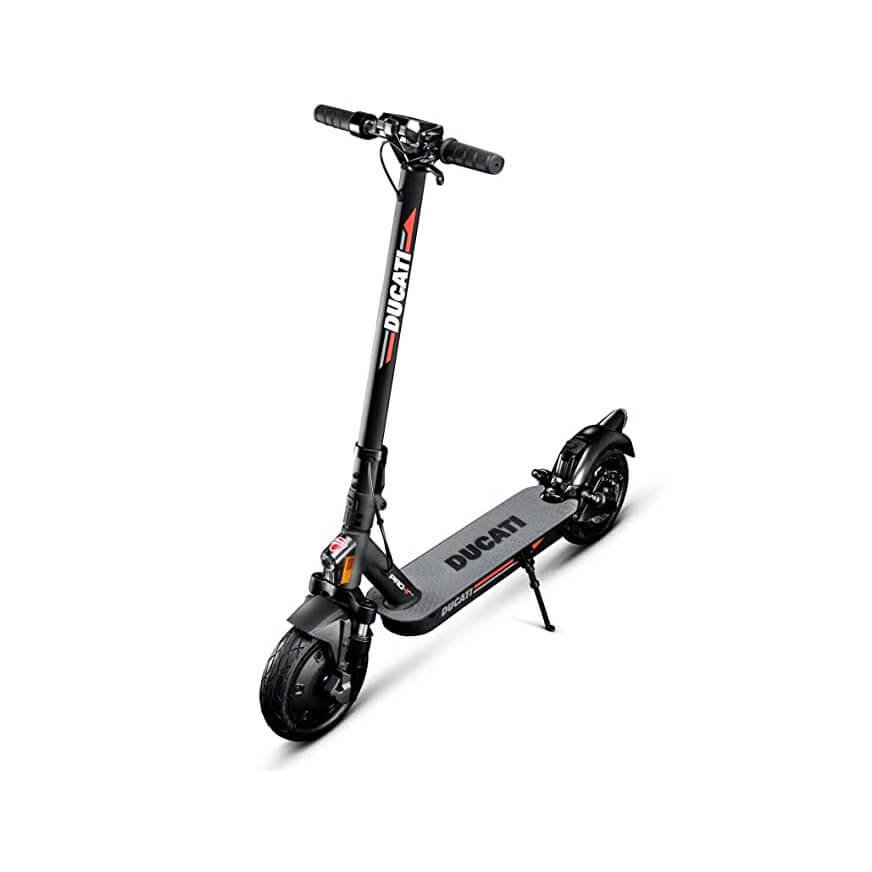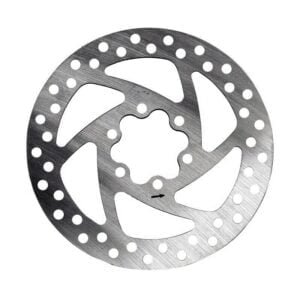Manual use of DUCATI PRO II Scooter and Error Code

The Ducati Pro II electric scooter 350 W brushless motor (with 550 W peak power) and 7.8 Ah battery for 25-30 km with total stability and comfort 350 W brushless motor (with 550 W peak power) and 7.8 Ah battery for 25-30 km with total stability and comfort
CHASSIS: magnesium alloy, with rear suspension
MOTOR: 350 W brushless (brushless)
BATTERY: 36 V, 7.8 Ah, 280 Wh
WHEELS: 10″, tubeless (tubeless), both front and rear
BRAKES: electric front brake, disc rear brake
DISPLAY: LCD 3.5″.
AUTONOMY: 35 km (at an average speed of 15 km/h, subject to variations depending on driver’s weight, road conditions, temperature, etc.).
MAXIMUM LOADING CAPACITY: 100 kg
RECHARGE TIME : about 5/6 hours
ECO SPEED: <= 6 km/h | D:<= 20 km/h | S: <= 25 km/h (max. speed)
WEIGHT: 12kg
Ducati Pro II Controls/Control Panel Information
- Speedometer: Displays the current speed of the scooter.
- Battery Level: The battery level is indicated by 7 bars.
- ODO: Total distance traveled.
- ROUTE: Distance of a single course.
- Headlamps: Headlamp indicator light.
- SPORT mode: The display will show S+. (up to 25 km/h).
- COMFORT mode – The display will show D. (up to 20 km/h).
- ECO mode – The display will show ECO. (up to 15 km/h).
- Cruise Control: Speed maintenance. It is activated after maintaining the same speed for a few seconds.
- Bluetooth
- PEDESTRIAN mode – (up to 6 km/h)
- Power button (B): Press and hold this button to turn the scooter on and off.
- Throttle (A): Use to start the scooter and to accelerate.
- Brake (C): Press and hold to brake.
- Mode: Press button (B) twice to select the mode.
- Front and rear light: Press button (B) once to turn them on. When the lights are on, press button (B) again to turn them off.

Adjustment of Ducati Pro II brakes

Brake levers: The position of the brake lever can be adjusted, if necessary, through point A (see photo).

Brake Caliper Adjustment: If the brake is too tight or too loose, use the hex wrench to loosen the nut (A), then adjust the brake cable, (shorten the brake cable up if it is too tight, pull the brake cable down if it is too loose) and then retighten the nut (A).
If, even after following the first step, the brake is too loose or too tight it may be necessary to adjust the brake pad (fixed) which can be adjusted through the wheel on the opposite side, using the hex wrench to move the pad away/towards (B) (see picture).
Check the correct alignment between the brake caliper and the disc. Use screws C and D to adjust the position/alignment on the disc if necessary.
Scooter autonomy
The condition of the wheels
The maximum range depends on several variables: Terrain: The range is greater when driving on a smooth surface than when driving on rough roads and slopes. User weight: The heavier the user, the shorter the range. Temperature: Riding the scooter in a very cold or hot environment affects the range. Speed and driving style: Driving smoothly and at a constant speed increases the range. Acceleration and aggressive maneuvers reduce range. Low speed extends the range. Maintenance: Timely recharging and proper maintenance increase the range.
Temperature: driving the scooter in a very cold or hot environment affects the autonomy. Speed and driving style: smooth and constant driving extends the range. Accelerations and aggressive maneuvers quickly reduce range. A low speed extends the autonomy.
Maintenance: timely recharging and proper maintenance increase autonomy.
Check brakes, pressure (44PSI), condition of wheels and throttle.
before each use. If you notice unusual noises or any anomaly, do not use the product and contact the Assistance Service.
Ducati Pro II Battery
(Warnings)
Make sure the scooter, charger and charging port are dry.
When the scooter is fully charged, the LED light on the charger changes from red (charging) to green (charging complete).
Use only the original charger. Other chargers damage the device and pose other potential risks.
The scooter should not be charged for prolonged periods of time. Overcharging reduces battery life and may cause other potential hazards.
Load the scooter in a dry environment away from flammable materials (e.g. materials that can burst into flames), preferably at an internal temperature of 15-25 °C, but never below 0 °C and never above + 45 °C.
Do not charge in direct sunlight or near fire. Do not charge the scooter immediately after use. Allow the scooter to cool down for one hour before charging.
Never leave the electric scooter unattended while charging. Risk of heat! Never connect the DC charging socket with metallic objects.
Read the charging and storage sections above to ensure proper battery maintenance and handling. Keep the scooter away from open flames or other heat sources to prevent the battery from overheating. Do not leave the scooter exposed to freezing temperatures. Both excessive heat and cold can drain the battery.
Avoid discharging the battery completely.
It is best to recharge the battery when it still has some charge. This prolongs battery life. When the load is too low, normal driving is not possible. This can cause the driver to lose control or fall.
Ensure that the battery is charged at regular intervals, even if you do not use the electric scooter for an extended period of time. This prevents damage to the battery caused by low voltage over a long period of time.
Battery precautions

The battery is composed of lithium-ion cells and chemical elements hazardous to health and the environment. Do not use the scooter if it emits odors, substances or excessive heat. Do not dispose of the electric scooter or battery with household waste.

Cleaning and storage of Ducati Pro II
If there are stains on the body of the scooter, wipe them off with a damp cloth. If stains persist, put toothpaste on them, brush with a toothbrush and then wipe with a damp cloth. If there are scratches on the plastic components, use sandpaper or other abrasive material to remove them. Notes: Do not clean the scooter with alcohol, gasoline, kerosene or other corrosive and volatile chemical solvents to avoid serious damage. Do not wash the scooter with high-pressure water jets. When cleaning the scooter, make sure it is turned off, the charging cable disconnected and the rubber cap closed, as water leakage could cause an electric shock or other serious problems. When the scooter is not in use, store it in a cool, dry place. Do not store outdoors for a prolonged period of time. Excessive sunlight, overheating and excessive cold accelerate tire aging and compromise the life of the scooter and battery.
Check the brakes and that they are correctly adjusted.
Check the screws in general
- Do not use batteries of other models or brands, as they may pose a safety risk.
- Do not disassemble, crush or puncture the product. Do not touch the battery contacts. Do not disassemble or drill holes in the outer casing. Avoid contact with water and fire and do not expose the product to temperatures above 50 °C (including heat sources such as stoves, heaters, etc.). Avoid contact of metallic objects with the battery contacts to prevent short circuits, physical injury or death.
- Water leaking into the battery may cause damage to the internal circuits and risk of fire or explosion. If you have any doubt that water may have entered the battery, stop using it immediately and take it to your dealer’s after-sales service for inspection.
- Use only the original charger to avoid potential damage or fire.
- Improper disposal of used batteries seriously pollutes the environment. Follow local regulations regarding battery disposal. Follow battery disposal regulations to protect the environment.
- After each use, fully recharge the battery to prolong its life. Do not store the battery in an environment where the temperature is above 50 °C or below -20 °C (for example, do not leave the scooter or battery in a car in direct sunlight for an extended period of time). Do not dispose of the battery in fire, as this may cause failure, overheating and even fire. If you do not plan to use the scooter for more than 30 days, recharge the battery to 50/60% and store it in a cool, dry place. Remember to recharge it every 60 days to protect it from damage excluded from the limited warranty. Always recharge the battery before it runs out of power to prolong its life.
Ducati Pro II data sheet
Low voltage protection 30.5V-32V
Current limit 18A
Brushed motor type
Maximum load 100kg
Battery 36V 7.8Ah 280Wh
Charger DC5521 42V 1.5A
Ducati Pro II error codes
|
Parts |
Error code |
Meaning |
|
Controller |
E 01 |
Over-current protection |
|
E 02 |
Low-voltage protection |
|
|
E 03 |
Over-voltage protection |
|
|
E 04 |
Locked-rotor protection |
|
|
E 05 |
MOSFET up bridge-arm fault |
|
|
E 06 |
MOSFET down bridge-arm fault |
|
|
E 07 |
Hall of failure |
|
|
E 08 |
over-temperature protection |
|
|
Speedometer |
E 09 |
throttle failure |
|
E10 |
Brake failure |
|
|
E 11 |
Headlight switch malfunction |
|
|
E 12 |
Communication failure |
|
|
E 13 |
Start switch failure |

Ducati Pro II problems and solutions
Question: Motor is not running
Battery is discharged/Electrical problem
Battery not connected (Check connectors)
Question: Rear wheel does not turn
Brake problem
Adjust the brakes
Question: Motor shuts off when running
Engine overheating
Release the throttle and wait for it to cool down.
Question: After charging, the vehicle shuts down.
Battery is damaged
Question: The vehicle stops suddenly while in motion.
Damaged power and control cables
Question: The battery does not charge or the scooter does not turn on.
Connection problems
2. Battery damaged/dropped out
3. Problems with the charger




